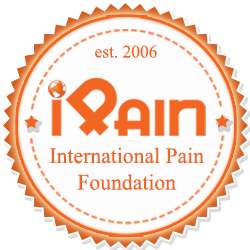Physical Therapy Treatment for Lower Back Pain
Lower back pain can be a debilitating condition that affects every aspect of your life unlike sacral dimple. There are many different treatments available to help relieve the discomfort and return you to normal function. One effective treatment is physical therapy, which is designed to reduce the pain and restore normal function in a short period. However, it is important that you understand how physical therapy works before you decide on whether or not it will be suitable for your condition. In this article, we’ll cover what physical therapy is, as well as the steps involved with treatment for lower back pain.
What is physical therapy?
Physical therapy is a form of treatment that utilizes physical interventions to help relieve pain and return patients to normal function. It is designed to reduce the pain and restore normal function in a short period.
In many cases, physical therapy can be used in place of medication or surgery to treat lower back pain. It can be used alone or alongside other treatments like massage, acupuncture, stretches, and exercises.
Different types of physical therapy for lower back pain
There are many different types of physical therapy for lower back pain. One type is called spinal manipulation, and it’s a manual procedure that involves the doctor or therapist putting pressure on your back in order to move the joints and muscles in your spine. The goal of this treatment is to reduce inflammation and restore normal joint mobility to relieve pain. Another type of physical therapy is called traction, which uses weights to stretch the spine and improve joint mobility.
The specific type of physical therapy that you choose will depend on your condition. You should also consider what you want to achieve with treatment. Spinal manipulation will be more beneficial if you have chronic pain and want to help minimize stiffness. It is also effective for inflammation-related conditions like sciatica, lumbar strain, and herniated disks. Traction is better suited for acute conditions related to direct injury or sudden muscle spasms in the lower back.
What are the steps in treatment for lower back pain?
Physical therapy for lower back pain can be a valuable treatment, but it’s important that you understand the steps involved.
The first step of physical therapy is an evaluation to determine the root cause of your back pain.
This may include x-rays, MRI scans, and other medical tests. After this evaluation is complete, your therapist will come up with a treatment plan for you based on the findings and your needs.
Treatment may include manual treatments such as massage and stretching exercises as well as exercises designed to strengthen your back and abdominal muscles. Your therapist will chart out a specific exercise program to follow at home or at work during your recovery time.
Some therapists may also prescribe different medications or prescribe injections to help manage nerve pain before moving forward with more invasive options like surgery.
5 considerations to take into account before you decide on physical therapy
Before you decide to undergo physical therapy, consider the following:
-1. Do you have medical coverage?
-2. What is your current condition?
-3. How much pain are you experiencing on a scale of 1-10?
-4. Is your job flexible enough to accommodate restrictions after treatment?
-5. Are you committed to the hard work ahead of you?
If any of these questions troubles you, it may be best not to continue with physical therapy. Physical therapy is not a miracle cure and can take up to six weeks before relief is felt and normal function is restored. If this doesn’t sound like something that will work for you, we encourage you to consult other methods that might better suit your needs and lifestyle!
Conclusion:
Physical therapy is effective for relieving the pain associated with back discomfort. It can also help to restore normal function in a short period of time. However, it’s important to understand how physical therapy works before you decide on whether or not it will be suitable for your condition.
In this article, we’ve discussed what physical therapy is and the steps involved in treatment. Now that you’re familiar with the basics of physical therapy, you may want to learn more about your options for lower back pain relief!
Article by: Emily John
Publisher: International Pain Foundation, iPain

